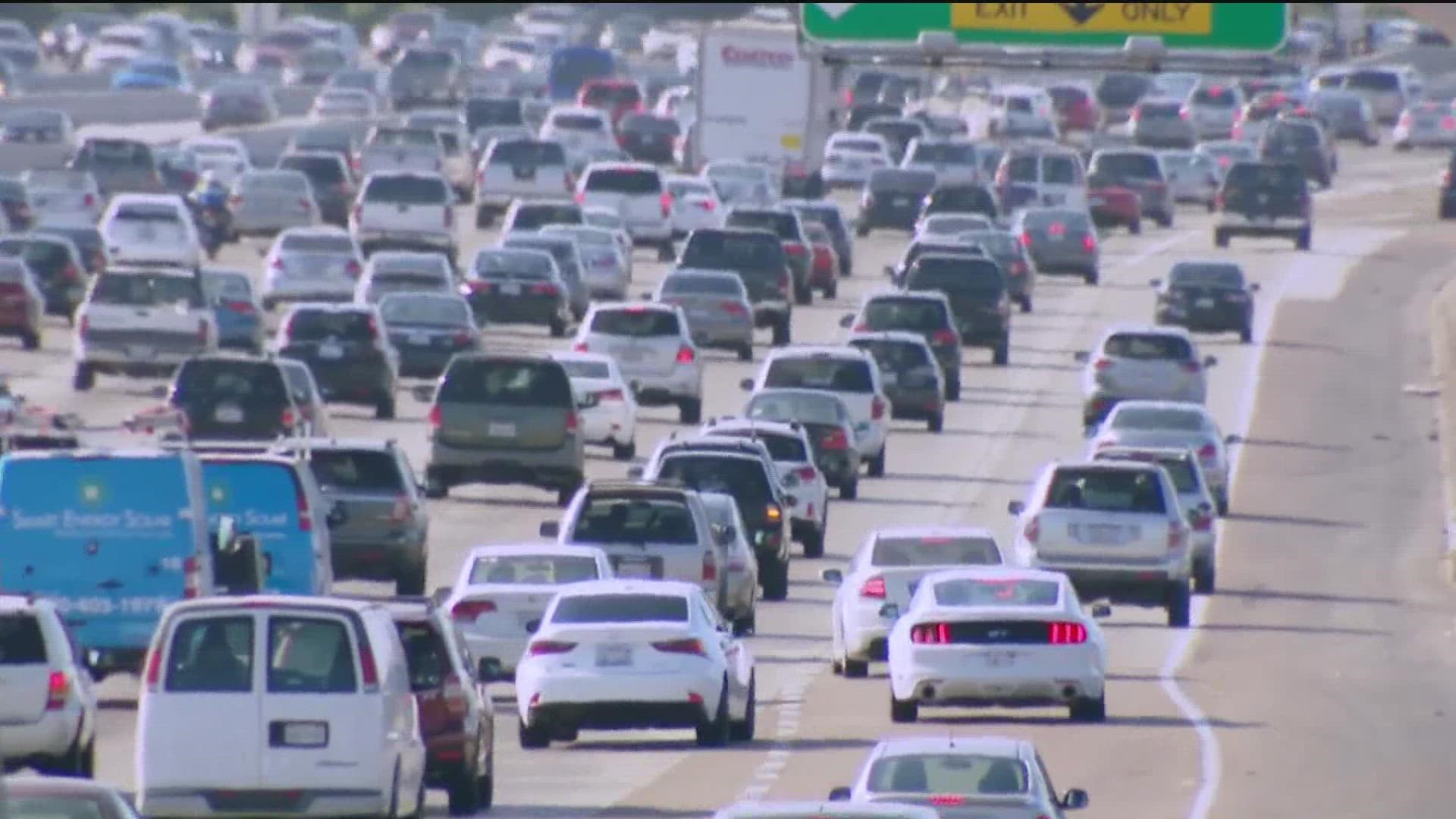SAN DIEGO — SANDAG board members struck down a proposed controversial mileage tax for drivers. The road usage charge would have cost drivers four cents for every mile driven.
The board's action set the stage for removing the regional road usage charge temporarily.
"I think today’s action was in response to the public feedback we’ve received over the past couple years, that voters were very skeptical of what a road usage charge would mean for their wallets and also how it would be implemented. So I think it was a step in the right direction," said Coronado Mayor Richard Bailey.
The proposal, introduced in 2021, was part of SANDAG'S $162.5 billion transportation plan, which had a goal to provide public transit at no cost over the next 30 years and build an extensive regional rail network.
The road charge would have helped fund the plan, but it would’ve meant an extra tax for taxpayers and drivers to bare.
"I think this speaks to a broader conversation of the role transportation plays throughout San Diego county. Currently, we’re spending about 55% of all local transportation dollars on public transit which moves fewer than 2% of all commuters. There’s a difference of opinion on the board as to whether or not we should invest in improving traffic conditions for the 90-plus percent of commuters that get around by car," added Bailey.
Jaoquin Silva, an Uber driver, says he’s glad the measure is not moving forward, "I'm grateful that it won't go through, they have to think other better ways, instead of taking 4 cents each mile, it's not good, to be honest. It's taking from our families."
According to Mayor Bailey, who sits on the board of directors, the proposal’s removal is only temporary and could likely make a comeback in the next regional plan.
"These plans take several years to adopt…that is why although we’re removing the road usage charge from the 2021 plan, I wouldn’t be surprised at all if we see other road usage charges including in the 2025 plan," said Bailey.
Bailey said Friday's meeting was aimed at identifying where to find future revenue to invest in either roads, highways and transit.
"A lot of people on the board, myself included are simply trying to find a transportation that works for San Diego county, recognizing our own unique characteristics," added Bailey.
SANDAG staff will now work over the next 6 to 12 months to do the necessary analysis to bring back to the board for final adoption. Ultimately, the state will give the final approval to have the proposal formally removed from the current regional plan.
WATCH RELATED: SANDAG has green light for mileage tax, officials push for new alternatives (Aug. 2022).

